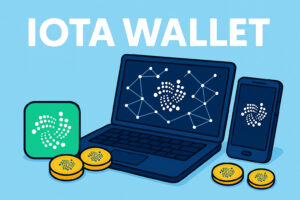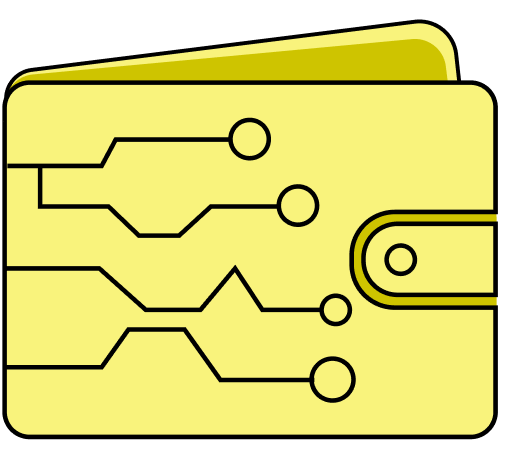Introduction
An iota wallet is a useful software application that enables you to store, receive, and send IOTA tokens on the Tangle network. IOTA utilizes a directed acyclic graph to make entries in transactions, and as such, fees are virtually zero and confirmations are quick. Selecting the appropriate iota wallet is essential for securing your tokens and using the network seamlessly. In this article, we shall look at various iota wallets, their functions, and how to install them. If you are both a new and experienced IOTA user, learning about wallets will help you secure your assets.

Devices showing IOTA Tangle network
Overview of IOTA Wallet
IOTA wallets act as electronic banking accounts for your MIOTA tokens. They both generate and secure private keys, the personal codes you use to govern your assets. When you send a transaction, the wallet signs the transaction with your private key and broadcasts it to the Tangle network. The wallet then monitors confirmations and your balance.
IOTA wallets exist in a multitude of different forms, ranging from browser-based interfaces to desktop clients and mobile applications. Each one brings its unique balance of convenience and protection. For example, wallets for mobile devices allow you to securely pay peers using a smartphone’s camera, and desktop wallets might have sophisticated functionality such as address reuse monitoring.
Since IOTA does not rely on miners, wallet software must do a minimal amount of proof-of-work in order to append transactions to the Tangle. Your iota wallet will automatically do this step for you, leaving you to send or receive tokens without any manual intervention. The proof-of-work also protects the network from spammers.
Types of IOTA Wallet
Mobile Wallets
Apps such as Firefly Mobile permit you to send tokens by scanning QR codes and view your balance at your fingertips. They also include functionality such as device encryption and face or fingerprint unlock, giving your keys an added level of protection. However, you do need to store a copy of your recovery phrase in the event your device becomes stolen or misplaced.
Desktop Wallets
The official IOTA desktop client, Firefly Desktop, is available for Windows, macOS, and Linux. It gives you the simplicity of an easy-to-understand interface for handling multiple accounts, creating addresses, and looking up the history of transactions. Desktop wallets typically operate against light nodes or a local node, putting you in control of your sources of data.
Hardware Wallets
Products such as Ledger Nano S or Nano X can also be used with the Firefly Desktop wallet and maintain your private keys in a hardware chip. The device will show you the information when you sign a transaction so that you can validate it manually on the screen. The model keeps your keys separated from connected systems to lower the threat of fund theft by a hacker.
Security Features in IOTA Wallet
The most important job of any iota wallet is protecting your private keys. Wallets all employ industry-standard cryptography to store the keys securely on your machine. Firefly, for instance, encrypts its database in such a way that even if your computer is breached, no one can read your keys without your password.
Recovery phrases serve as a fall back method in the event you lose your device. When setting up a wallet for the very first time, you’ll be provided with a 24-word phrase to write down and keep confidentially stored off line. If your wallet app is uninstalled or your phone is stolen, you can recover your assets by inputting the phrase into a new installation. Handle this phrase like you would gold – do not disclose it to anyone.
Most wallets accommodate multi-signature configurations, in which multiple devices or individuals are required to sign a transaction for it to be sent. The facility is particularly helpful for shared accounts or corporate coffers. All the signers have a fragment of the puzzle, and only once there are sufficient signatures does the wallet submit the transaction. Multi-signature does make transactions more complicated, though, as well as much more secure.
Setting Up Your IOTA Wallet
Firstly, download the official Firefly wallet from the IOTA Foundation website. Validate the download’s checksum to verify that it is not tampered with. Launch the installer, then proceed with the prompts to create a new profile. You will be prompted to enter a password and to generate your recovery phrase.
After you install Firefly, it will automatically connect to a light node and synchronize your balance and history in a matter of minutes. To send monies, select “Send,” type or scan the recipient’s address, enter the amount to send, and authenticate with your password or hardware. Tokens are received automatically when the network validates your transaction, usually within seconds.
For a mobile wallet, find “Firefly” in your phone’s app store. Download the app and then restore or set up a profile with your recovery phrase. Mobile interfaces tend to show transactions in a more simplified manner, with bigger buttons and minimal menus. Keep in mind that mobile devices are subject to other risks, including a lost or stolen phone, so utilize native encryption and protect your phone with a robust passcode.
Community and Ecosystem Integration
IOTA wallets link you to an expanding universe of applications and services. Wallet programs also include references to decentralized exchanges, which are used to exchange IOTA for other tokens. Firefly supports the upcoming client library for MAM streams and protocols for smart contracts, so developers can open up sophisticated data marketplaces and automation tools.
Community members support wallets with plugins and extensions. As an example, there are browser plugins which allow you to grant web applications access to your wallet in real-time, much like you would have a network’s wallet extension. Such a feature opens the door for identity solutions, with you demonstrating control over an address without exposing your private key.
The IOTA community also teaches new users via tutorials, forums, and social networks. Various developers of wallets organize live workshops or make video tutorials with best practices. With the help of these sources, you can keep yourself up to date with the latest wallets, patch updates, and future additions such as future smart contract support.
Future Developments for IOTA Wallets
The IOTA Foundation will implement interconnected functionality that marries data and value transfer. Wallets will facilitate access to smart contract chains and streams of data so that users can stake or earn a reward from lending their computing and storage capacity. When the protocols are implemented, wallets will show new balances and options in their UI.
Another great milestone in the future is cross-chain bridges. Wallets will allow you to deposit IOTA to the Tangle and mint tokens wrapped across other networks, adding IOTA to DeFi ecosystems. To integrate this, there will be a need to carefully design for simplicity in the wallets for users with complicated bridge logic behind the scenes.
Ease of use is still a priority. Wallet creators want to make it more straightforward for non-techie users to onboard, with less jargon and step-by-step walkthroughs with positive language. Look for wallets to integrate phone and desktop profiles through cloud syncing so you can move from one to the other without having to re-key your recovery phrase.
Conclusion
An IOTA wallet is your entry point to the IOTA network, with secure custody, hassle-free transactions, and access to new functionality. You pick the type of wallet based on your requirements – convenience with a mobile, control with a desktop, or protection with hardware.
Wallet best practices, including recording your recovery phrase and encrypted storage, ensure your tokens are secure. As IOTA continues to advance with new protocols and cross-blockchain bridges, wallets will evolve to incorporate more functionality under one roof. For all who hold IOTA, learning about wallets is step one in tapping the vibrant, transaction-free network.












 Twitter
Twitter
 Telegram
Telegram
